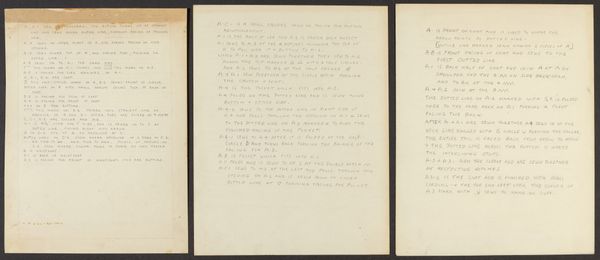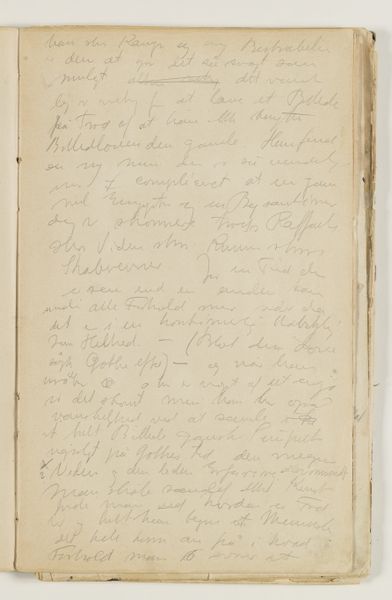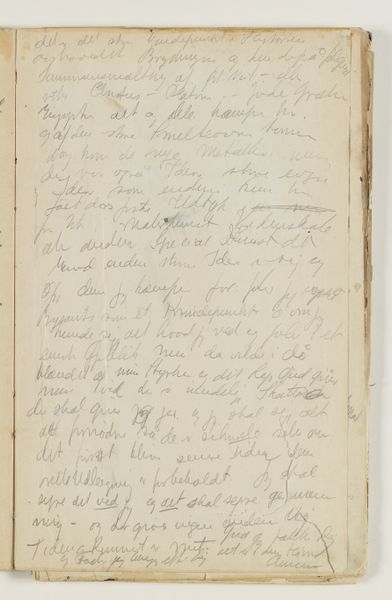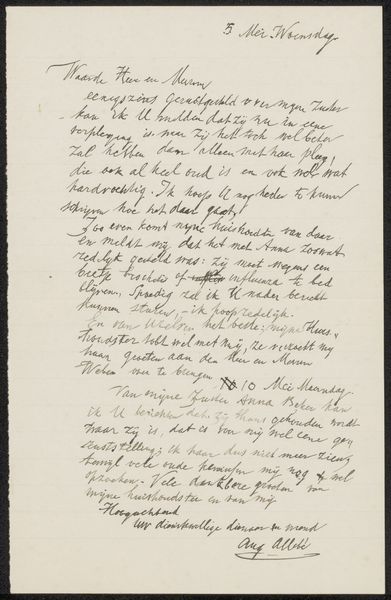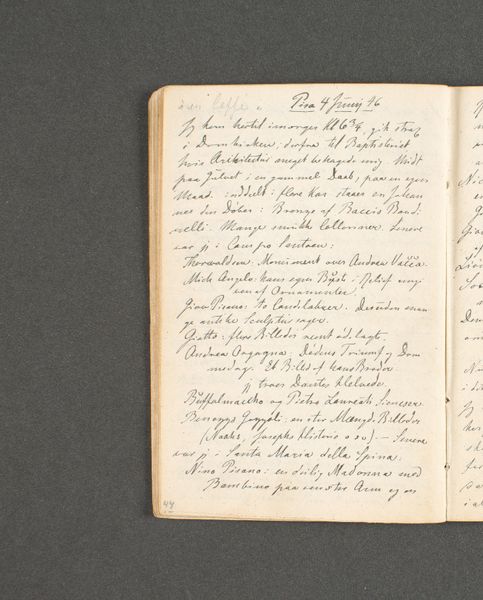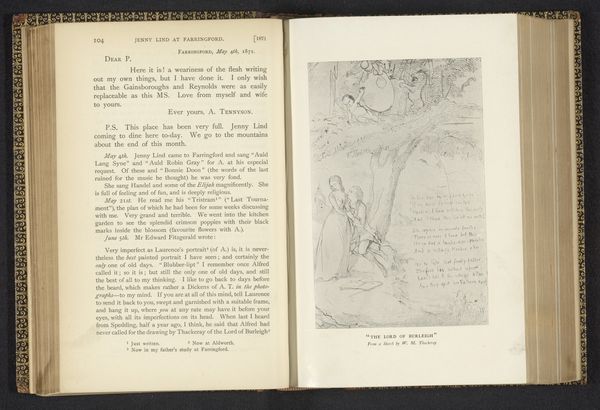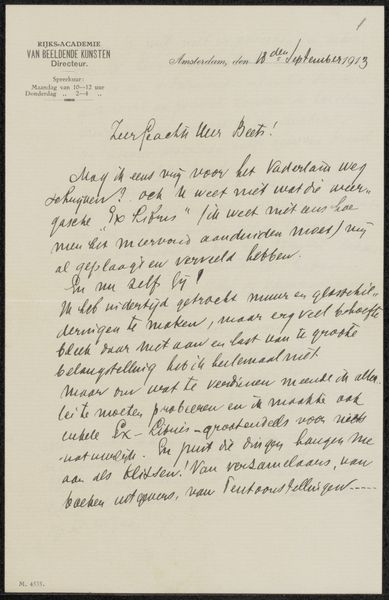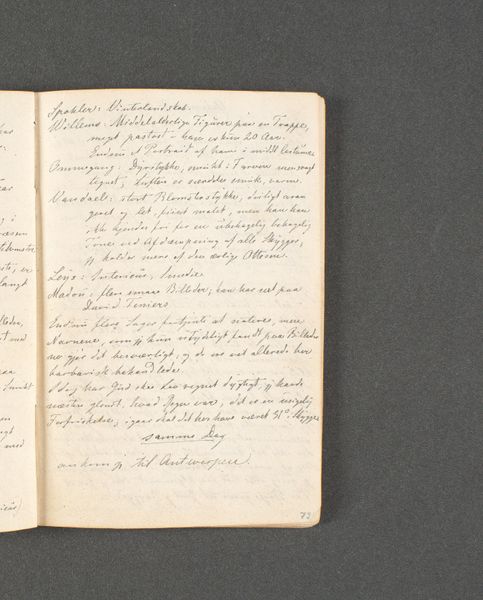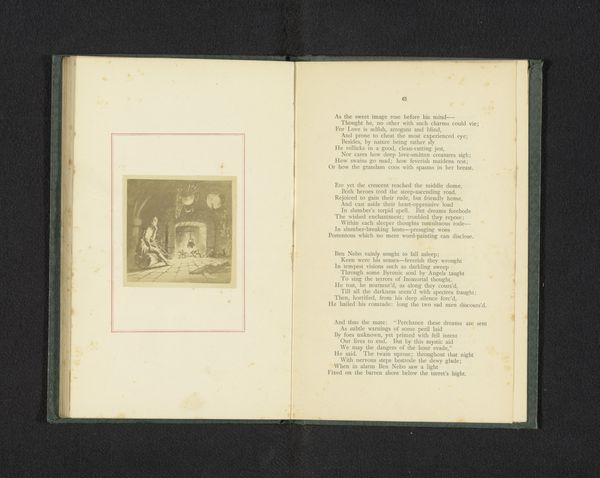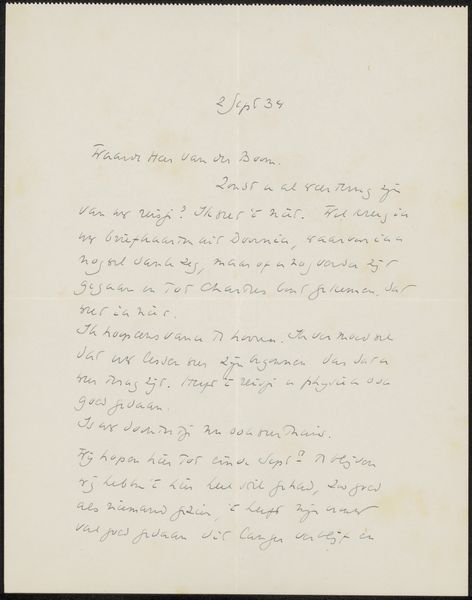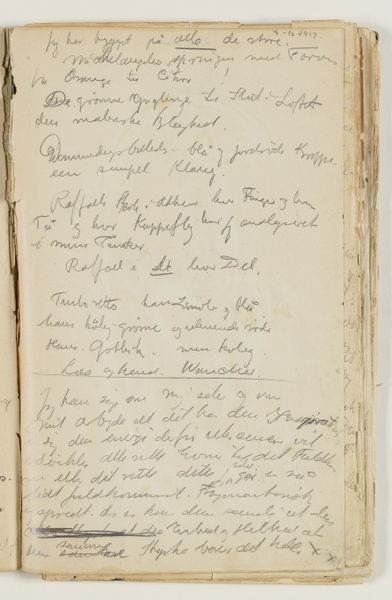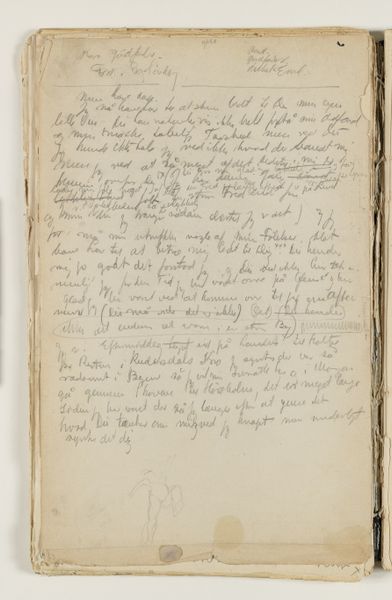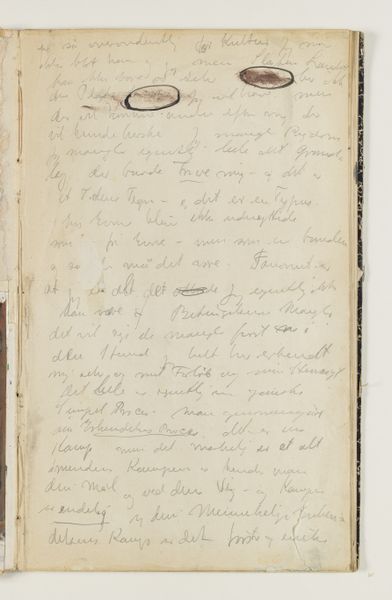
#
aged paper
#
homemade paper
#
paper non-digital material
#
paperlike
#
personal journal design
#
paper texture
#
personal sketchbook
#
thick font
#
letter paper
#
historical font
Dimensions: height 137 mm, width 103 mm
Copyright: Rijks Museum: Open Domain
Editor: Here we have a photographic reproduction of a poem, "In Memoriam," likely created before 1897. It's displayed within an opened book, showing what looks like a handwritten draft on one side and a typeset version on the other. The mood feels very intimate, like peering into a private journal. How do you interpret the contrast between the handwritten and printed versions? Curator: This juxtaposition really speaks to the complex interplay between personal expression and public presentation, a common tension for women artists and writers of the time. Consider the constraints placed upon them. The handwritten draft signifies authenticity, perhaps a raw emotionality, while the typeset poem represents a sanitised, publicly acceptable version, shaped by societal expectations. It begs the question: Whose voice are we really hearing, and what has been lost in the translation? Editor: So, you see the printing as a kind of filtering process? Curator: Precisely. We must think about how access to publication itself was heavily mediated by gender and class. The ability to see one's work in print often required adhering to prevailing norms, potentially silencing or obscuring the most radical aspects of the original vision. What do you think the act of photographing the handwritten poem adds to this dynamic? Editor: I hadn't thought of that. Maybe the photo is a way to reclaim the original intent. It acknowledges both versions – the private and the public. Curator: Exactly. It highlights the inherent value in that initial, unfiltered expression. We are given access to what may have been originally denied widespread viewership. It invites us to consider the social and cultural forces that shaped its journey from private thought to public consumption. Editor: That’s fascinating. I will never look at historical texts the same way! Thanks for the new perspective. Curator: And thank you for opening up these essential questions. Understanding these nuances is key to uncovering the rich, layered meanings embedded within art.
Comments
No comments
Be the first to comment and join the conversation on the ultimate creative platform.
